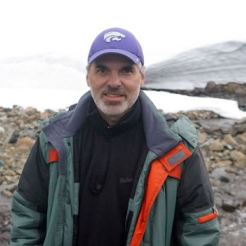Watershed Hydrology and Water Quality: Emerging Environmental Issues and Novel Modeling Techniques
A special issue of Water (ISSN 2073-4441). This special issue belongs to the section "Hydrology".
Deadline for manuscript submissions: closed (31 December 2021) | Viewed by 12823
Special Issue Editors
Interests: water resources engineering; optimization; uncertainty analysis; watershed modeling; flood control
Special Issues, Collections and Topics in MDPI journals
Interests: soil erosion; ephemeral gully erosion; watershed modeling; climate change impacts; hydrology
Special Issues, Collections and Topics in MDPI journals
Special Issue Information
Dear Colleagues,
In the past two decades, there have been significant advances in computer modeling tools and technology that improved our understanding of hydrological processes and water quality transport at hillslope, catchment, and watershed scales. This resulted in better management of natural resources and targeted implementation of conservation practices in many regions of the world. Special considerations have been given to the evaluation of climate variability and extremes in the agro- and socio-economic sectors. In this Special Issue, we invite submissions that incorporate watershed scale studies on hydrologic and nutrient processes with innovative approaches to solve environmental problems and novel applications of modern technology. This Special Issue will cover research on the impacts of climate change on watershed hydrology (surface, subsurface, groundwater) and water quality (nutrients, pesticide, bacteria, etc.). Studies of emerging environmental issues at watershed scale that require novel modeling approaches, development of new tools, or improvement of the existing models are especially welcome.
Dr. Haw Yen
Dr. Aleksey Y. Sheshukov
Guest Editors
Manuscript Submission Information
Manuscripts should be submitted online at www.mdpi.com by registering and logging in to this website. Once you are registered, click here to go to the submission form. Manuscripts can be submitted until the deadline. All submissions that pass pre-check are peer-reviewed. Accepted papers will be published continuously in the journal (as soon as accepted) and will be listed together on the special issue website. Research articles, review articles as well as short communications are invited. For planned papers, a title and short abstract (about 250 words) can be sent to the Editorial Office for assessment.
Submitted manuscripts should not have been published previously, nor be under consideration for publication elsewhere (except conference proceedings papers). All manuscripts are thoroughly refereed through a single-blind peer-review process. A guide for authors and other relevant information for submission of manuscripts is available on the Instructions for Authors page. Water is an international peer-reviewed open access semimonthly journal published by MDPI.
Please visit the Instructions for Authors page before submitting a manuscript. The Article Processing Charge (APC) for publication in this open access journal is 2600 CHF (Swiss Francs). Submitted papers should be well formatted and use good English. Authors may use MDPI's English editing service prior to publication or during author revisions.
Keywords
- water resources engineering
- watershed modeling
- environmental assessment
- climate change
- conservation practices
- model development
Benefits of Publishing in a Special Issue
- Ease of navigation: Grouping papers by topic helps scholars navigate broad scope journals more efficiently.
- Greater discoverability: Special Issues support the reach and impact of scientific research. Articles in Special Issues are more discoverable and cited more frequently.
- Expansion of research network: Special Issues facilitate connections among authors, fostering scientific collaborations.
- External promotion: Articles in Special Issues are often promoted through the journal's social media, increasing their visibility.
- Reprint: MDPI Books provides the opportunity to republish successful Special Issues in book format, both online and in print.
Further information on MDPI's Special Issue policies can be found here.






